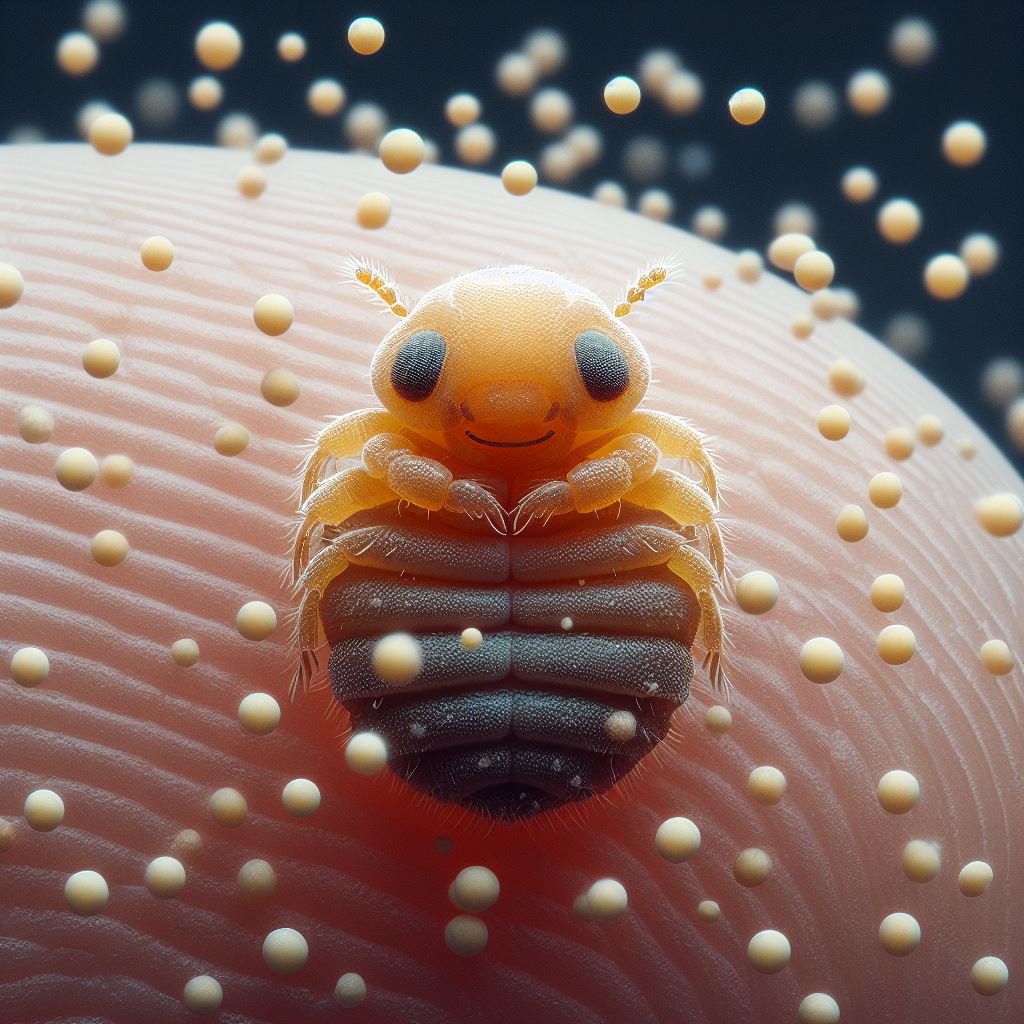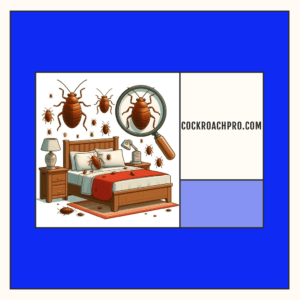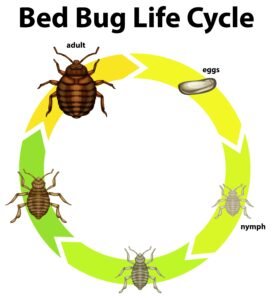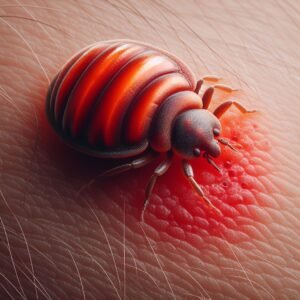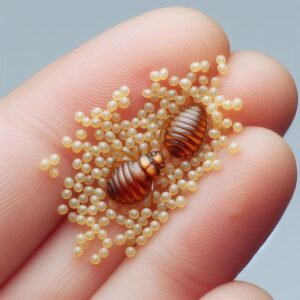A baby bed bug, also known as a nymph, is very small in size, measuring about 1.5 millimeters when it first hatches.
Bed bugs are a notorious pest that can infiltrate homes and torment residents with their bites. Getting rid of them requires understanding all life stages, including baby bed bugs. Knowing details like how big they are, where they hide, and how to eliminate them will empower you when battling these crafty insects.
How Big Is A Baby Bed Bug?
How Big Is A Baby Bed Bug? A baby bed bug, also called nymph, is extremely tiny after hatching from eggs. The size varies slightly as they grow, but here is an overview:
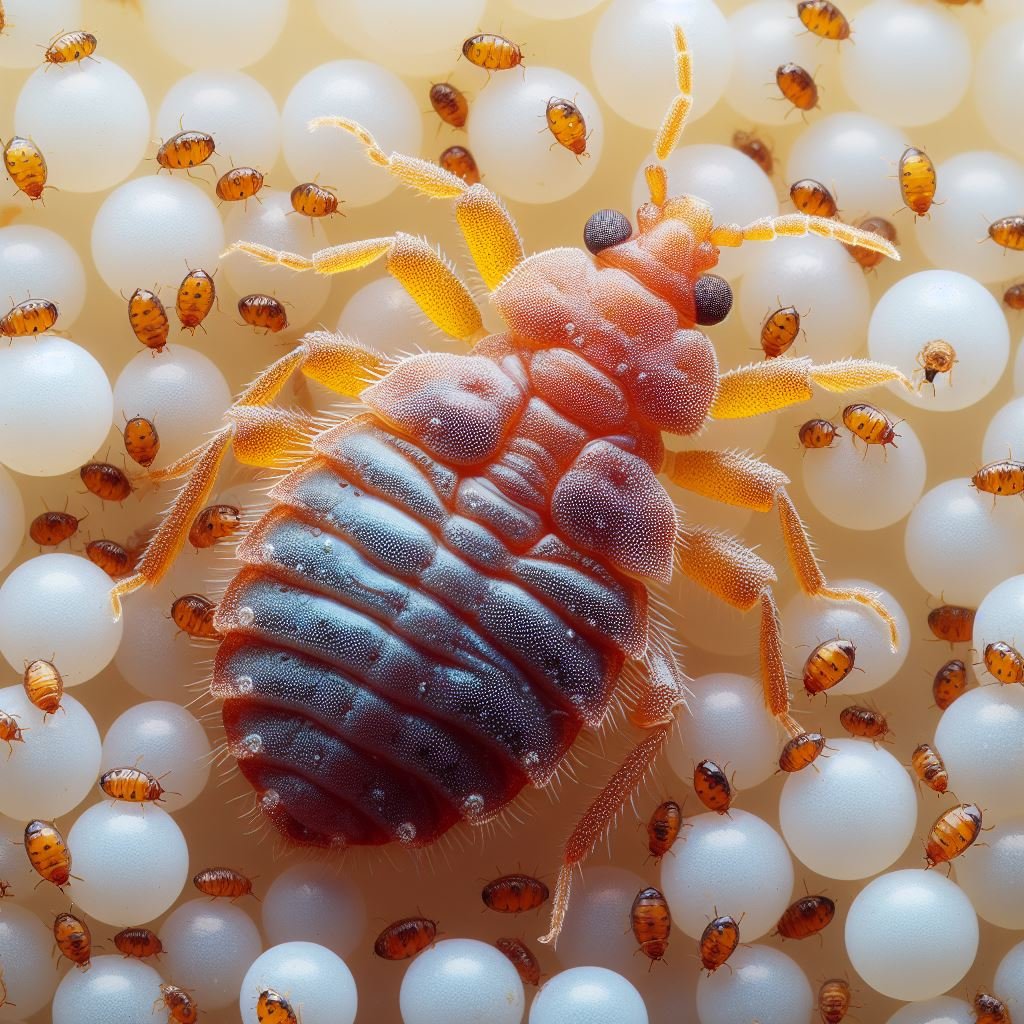
Newly Hatched Bed Bugs
- Length: Approximately 1.5 millimeters, similar to the thickness of a quarter
- Appearance: Pale yellow, semi-transparent insects
Nymphs are barely visible to the naked eye immediately after emerging from eggs. A magnifying glass may be needed to distinguish tiny white bed bugs from dust particles when inspecting.
As juveniles feed and molt, they reach about 1.5-2 millimeters before becoming full adults. This makes newly hatched bed bugs similar in size to a sesame seed and older nymphs closer to a pinhead.
While miniscule, baby bed bugs can still bite and feed on blood if given the opportunity. Their small size enables them to hide in tiny spaces making detection complicated.
Do baby bed bugs bite?
Yes, baby bed bugs, also known as nymphs, do bite. Like adult bed bugs, nymphs require blood meals to grow and develop. They have the same feeding habits as adults and will bite humans or animals to obtain blood. While nymphs are smaller in size compared to adults, their bites can still cause irritation and discomfort similar to those from adult bed bugs.
Where to Find Baby Bed Bugs
Knowing where to search is key when hunting for elusive baby bed bugs. Juveniles tend to congregate in groups near food sources, meaning close to host beds and sleeping areas.
1. On and Around Beds
All bed bug life stages can be found hiding within mattresses, box springs, and bed frames. Specifically check:
- Fabric seams, buttons, tufts, and edges on mattresses and box springs
- Cracks, corners, holes, and crevices in wood or metal bed frames
- Under labels, handles, stickers, and nutritional information on mattresses
- Inside and under built-in nightstands attached to bed frames
Bed bugs also frequently reside in bedding materials. Inspect pillowcases, sheets, comforters, bed skirts, and mattress toppers. Remove and wash all items showing signs of infestation.
2. Furniture and Items Near Beds
Bed bugs living in bedrooms will also hide in spots near beds for easy access to hosts, including:
- Nightstands, end tables, and dressers
- Books, paper, magazines, electronics
- Lamps, alarm clocks, phones, remotes
- Paint, picture frames, electrical outlets
- Carpet edges, baseboards, window frames
Check all crevices in wooden furniture, underneath lamp bases, behind outlet cover plates, and inside drawers near beds to locate baby bed bugs.
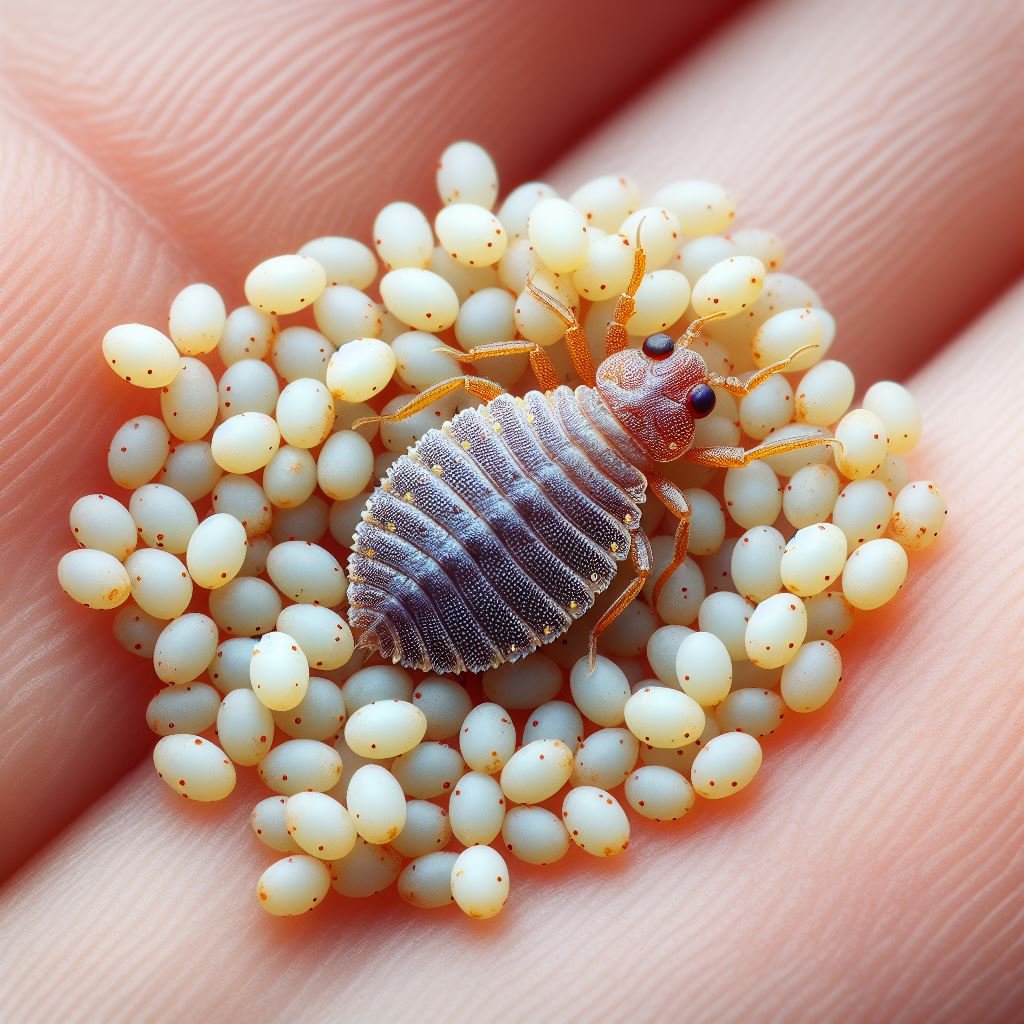
10 Reasons Why Baby Bed Bugs Are Present in your house
Many are curious why bed bugs continue to be an issue and infest homes in the first place. Several biological reasons enable these insects to establish populations and thrive.
1. Rapid Reproduction
Given proper conditions like temperatures around 70-80° F, bed bugs can produce eggs very quickly. Females may deposit 1-5 eggs per day and over 200-500 eggs in a lifetime. This allows populations to rise rapidly.
2. Eggs Can Survive for Months
Bed bug eggs have extremely durable outer shells that enable them to endure for long periods if needed until conditions for hatching become optimal. Eggs are estimated to survive around 10 months without proper treatment methods.
3. Nymphs Molt 5 Times Before Maturing
Baby bed bugs must shed their exoskeletons and molt about 5 times over 6-8 weeks before reaching a mature adult stage. This contributes to their proliferation within homes.
4. Mobility Immediately After Hatching
Many young insects cannot walk or move easily after emerging. However, baby bed bugs can immediately crawl and start seeking hosts for feeding within hours after hatching.
5. Must Feed After 3-4 Days
Both juvenile and adult bed bugs require regular blood meals from animal hosts, needing to feed once every 3-4 days. This compel them to continually seek out people and pets.
6. Easily Spread to Other Rooms and Units
The small size and flattened bodies of bed bugs enable them to travel easily through wall voids, gaps, ductwork, vents and electrical conduits. They can spread rapidly between rooms, floors and even nearby apartment units.
7. Difficult to Detect Due to Size and Shape
The tiny, flattened physical appearance allows all stages of bed bugs to hide in spaces as narrow as a credit card. Their size and adaptability makes them elusive.
8. Develop Pesticide Resistance
Bed bugs have a longer history of pesticide exposure compared to other household pests. Some populations have evolved genetic mutations making them resistant to common insecticide ingredients.
9. Very Hard to Fully Eradicate
The prolific breeding, hardy eggs, and ability to disperse contributes to bed bug infestations often recurring after attempts to eliminate them in a home.
10. Many Treatment Methods Do Not Kill Eggs
The protective shells of bed bug eggs shield the developing embryo from penetration by certain insecticide sprays and freezing temperatures, allowing some to survive initial control attempts.
Related post Are bed bugs dangerous?
Being aware why bed bugs prosper allows people to understand what makes this pest so successful. It also highlights the importance of addressing all life stages in prevention and control plans.
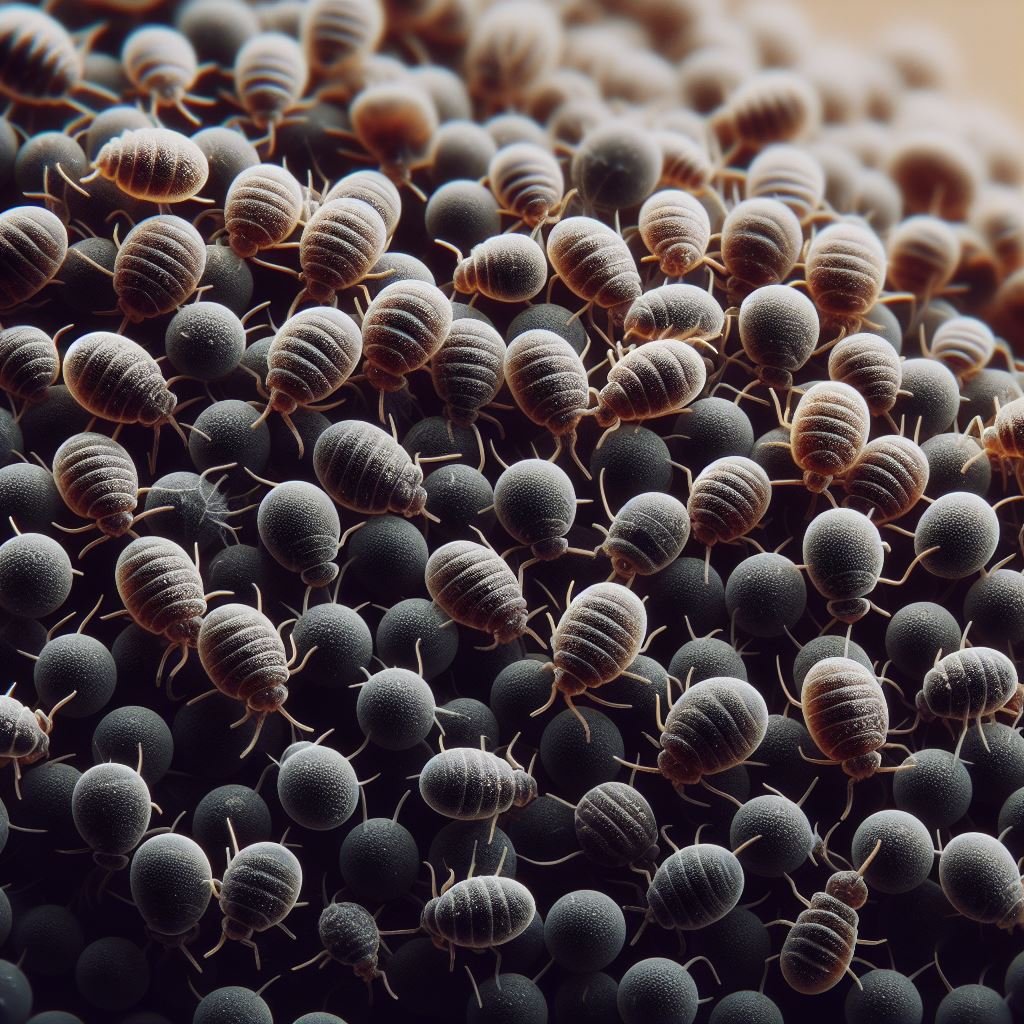
8 Tips to Get Rid of Baby Bed Bugs
Eliminating bed bugs requires diligence, patience and attacking all life stages including eggs.
Here are 8 methods to target juvenile bed bugs:
1. Thoroughly Inspect Infested Areas
Use flashlights, magnifying glasses, playing cards and other tools to scan mattresses, furniture, bed frames and surrounding areas for bed bugs. Pay special attention to potential hiding places noted earlier. Catching infestations early makes treatment easier.
2. Apply Pesticides in Crevices and Gaps
Use a small nozzle on spray bottles to inject quality residual pesticides directly into bed bug hiding spots like mattress tufts, crevices, baseboards and cracks. This offers longer-lasting control when applied correctly.
3. Encase Mattresses and Pillows
Waterproof zippered covers for mattresses and box springs trap bed bugs inside and prevent new ones from getting in, cutting off access to hosts. Pillow covers should also be used to quarantine bedding access points. Leave encasements on for at least 1 year.
4. Isolate Infested Mattresses
After wrapping a used mattress with an encasement, completely seal it in a plastic bag or sheeting for up to 1 year until bed bugs inside die off. Store it away from bedrooms so any surviving or hatching bugs die before accessing hosts.
5. Wash Items in Hot Water Above 115°F
Wash all linens, clothing and fabrics collected near sleeping areas in hot water and dry on the highest dryer setting to kill bed bugs. Items that can’t be washed can go in a hot dryer for 30 minutes to kill bugs and eggs.
6. Vacuum Mattresses, Bed Frames and Nearby Furniture
Utilizing crevice attachment tools on vacuums can suck up lodged bed bugs of all ages. Give special attention to protected areas like tufts, seams, screw holes and corners. Properly dispose of vacuum contents after.
7. Discard Heavily Infested Furniture
Bed frames, mattresses, box springs and upholstered furniture showing major infestations are safest to discard so surviving eggs and bugs don’t repopulate. Mark unwanted items to deter others from taking infested items.
8. Hire a Professional Exterminator
For severe bed bug cases possibly involving neighboring units in apartments or hotels, contacting a reputable pest control company is best. Heat and chemical fumigation treatments used by professionals offer the highest success rates when infestations spiral out of control.
Catching and treating bed bugs early, especially targeting juvenile stages using recommended techniques will help subdue infestations. Stopping them before exponential breeding makes populations mushroom saves much effort down the road.
Conclusion
Bed bugs can be extremely difficult to defeat largely due to their challenging life stages from tiny nymphs to hardy eggs. Understanding details like the small size of baby bed bugs, where they originate, and conditions enabling them to proliferate offers greater insight when battling them.
Leveraging this knowledge along with properly implemented control measures recommended in this article can help homeowners and renters achieve victory over bed bug invasions before they become firmly entrenched.
Staying vigilant is vital since bed bugs often rebound after insufficient treatment. Tackling juvenile bed bugs and eggs eliminates the next generation, which strangles future expansion, eventually starving out developing infestations.

